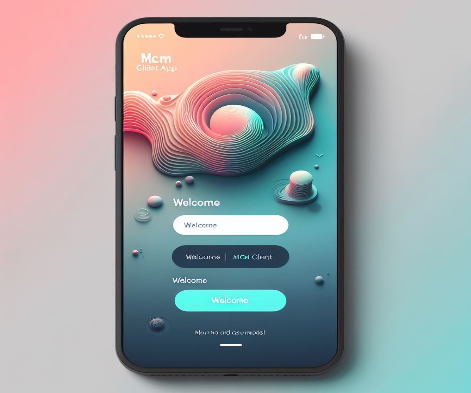In today’s digital age, mobile content management (MCM) plays a crucial role in facilitating seamless access to corporate data and resources on mobile devices. The MCM Client Application is a key component of MCM solutions, designed to enhance productivity, security, and collaboration for users. Let’s delve into what the MCM Client Application entails, its functionality, safety considerations, and how to uninstall it if necessary.
Understanding MCM: Mobile Content Management
Mobile Content Management (MCM) refers to the strategies, technologies, and processes used to securely manage and distribute content, documents, and data on mobile devices. MCM solutions enable organizations to extend their content management capabilities to mobile platforms, ensuring that employees can access, share, and collaborate on corporate content while on the go.
Exploring the MCM Client for Users
The MCM Client Application serves as the user interface for accessing and interacting with MCM solutions on mobile devices. It provides users with a centralized hub for accessing corporate documents, files, and resources, as well as tools for securely sharing, syncing, and collaborating on content.
Functionality of the MCM Client Application
The MCM Client Application offers a range of functionality tailored to the needs of mobile users, including:
- Secure access to corporate content and documents.
- Accessing files offline to enhance productivity while on the move.
- Document editing and annotation capabilities.
- Integration with other productivity tools and applications.
- Secure file sharing and collaboration features.
How to Identify the Presence of MCM Client on Your Android Device
To identify whether the MCM Client Application is installed on your Android device, you can:
- Navigate to the list of installed applications in your device settings.
- Search for “MCM Client” or the name of the specific MCM solution used by your organization.
- Look for the MCM Client icon or logo on your device’s home screen or app drawer.
Key Features of an MCM Client for Android
Some key features of an MCM Client for Android may include:
- Seamless integration with existing corporate systems and repositories.
- Advanced security functionalities, encompassing encryption, authentication, and remote wipe capabilities.
- Intuitive interface designed for effortless navigation and seamless access to content.
- Offline access to files for enhanced productivity.
- Support for collaboration and document sharing among users.
Significance of an MCM Client in Business Operations
The MCM Client plays a crucial role in enabling mobile productivity and collaboration for businesses across various industries. By providing employees with secure access to corporate content and resources on their mobile devices, MCM solutions empower organizations to enhance efficiency, agility, and competitiveness in today’s fast-paced business environment.
Safety Considerations for Using the MCM Client
While MCM solutions prioritize security and data protection, it’s essential for users to adhere to best practices for safeguarding corporate information on mobile devices. This includes:
- Using strong, unique passwords or biometric authentication methods to access the MCM Client.
- Avoiding unauthorized installation of third-party applications or modifications to device settings.
- Reporting any suspicious activity or security incidents to IT or security personnel promptly.
Is the MCM Client Considered Spyware?
No, the MCM Client is not considered spyware. It is a legitimate application designed to facilitate secure access to corporate content and resources on mobile devices. However, users should ensure that they download the MCM Client from official app stores or trusted sources to avoid potential security risks.
Benefits of Using the MCM Client Application
Some benefits of using the MCM Client Application include:
- Enhanced productivity and flexibility for mobile workers.
- Secure access to corporate content and resources from anywhere, at any time.
- Improved collaboration and document sharing among teams.
- Compliance with data protection regulations and industry standards.
Drawbacks of the MCM Client Application
Some potential drawbacks of using the MCM Client Application may include:
- Dependency on network connectivity for accessing and syncing files.
- Compatibility issues with certain device models or operating system versions.
- Possible security weaknesses if not adequately configured or managed.
Removing the MCM Client: Step-by-Step Guide
If you need to uninstall the MCM Client from your Android device, you can follow these steps:
- Go to the Settings app on your device.
- Navigate to the Apps or Applications section.
- Find the MCM Client application in the list of installed apps.
- Tap on the MCM Client to open its App Info screen.
- Select the option to uninstall or remove the application.
- Follow the on-screen prompts to confirm the uninstallation process.
Alternative Mobile Content Management Solutions
If you’re looking for alternative MCM solutions, consider exploring other reputable vendors and platforms that offer similar features and functionality tailored to your organization’s needs. Some popular MCM solutions include Microsoft Intune, Citrix Endpoint Management, and VMware Workspace ONE.
Concluding Remarks
In conclusion, the MCM Client Application plays a vital role in enabling mobile productivity, collaboration, and access to corporate content and resources on Android devices. While it offers numerous benefits for businesses and users, it’s essential to prioritize security and compliance considerations and follow best practices for safe and effective use. If uninstallation is necessary, users can follow the provided step-by-step guide to remove the MCM Client from their devices.
